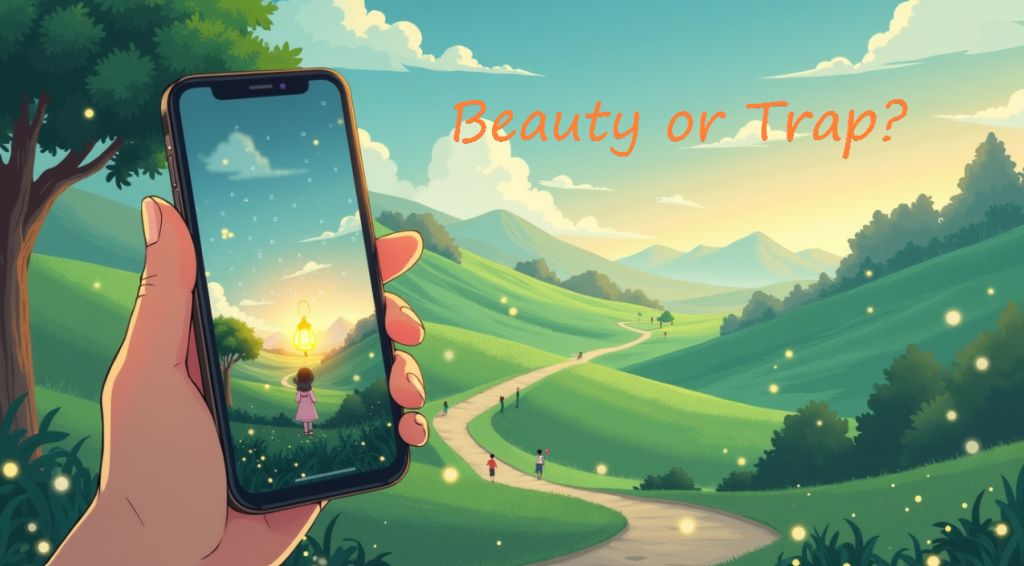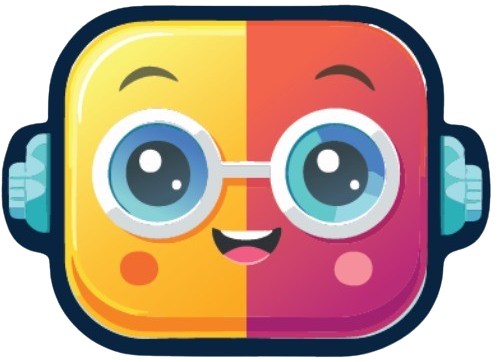It began with a reel and started innocently-soft piano in the background, a girl with wind-tousled hair, rolling green hills straight out of a Ghibli film. The caption read: “This is what my life would look like in a Ghibli movie.” Overnight, the Ghibli AI trend exploded.
1. Why We Craved a Ghibli-Style Escape
When OpenAI introduced image generation in ChatGPT, it granted us a simple portal into that beloved Studio Ghibli world:
-
Soft Pastels & Watercolors: Dreamlike hues and hand-drawn texture
-
Cozy, Slow Moments: Lantern-lit streets, overgrown gardens, friendly spirits
-
Childlike Wonder: Whisper-quiet hills, floating teacups, wind-tousled hair
In a digital age of endless scrolling and high-speed feeds, we longed for warmth and calm. A quick prompt later, our timelines filled with pastel dreamscapes an instant, shared moment of online respite.
2. How the Ghibli AI Trend Works
-
Craft Your Prompt
Example: “Generate a watercolor portrait of me in a Ghibli-style forest, lanterns glowing behind.” -
Limited Free Credits
ChatGPT grants a handful of image-gen credits enough to spark creativity while reminding us that these tools run on data. -
Data Feedback Loop
Every prompt, tweak, or upload subtly trains the model. Your idea of “Ghibli style” becomes part of its evolving definition.
3. The Hidden Cost: Your Personal Data
“I only wanted a cute AI selfie did I give away more than that?”
Behind every magical portrait lies your data:
-
Stored Prompts & Uploads: Potentially retained indefinitely
-
Model Training: Your likeness and style preferences help refine the engine
-
Privacy Trade-Off: Fewer true opt-outs and growing concerns over how our images and words are used
4. Ethics & Artist Rights
-
Clear Attribution: Note “AI-generated with ChatGPT” and “Ghibli-inspired,” not official Studio Ghibli.
-
Respect Human Creators: AI art borrows from countless human works support original artists by sharing their portfolios and tutorials.
-
Homage, Not Replacement: Celebrate the trend as a tribute, not a substitute for handcrafted animation.
5. People Also Ask: Ghibli AI FAQs
What is the Ghibli AI trend?
A surge of AI-generated images emulating Studio Ghibli’s watercolor, hand-drawn charm powered by ChatGPT’s new image generation feature.
How to do the Ghibli trend in ChatGPT?
-
Open ChatGPT’s image-gen tool.
-
Enter a prompt like:
“Create a Ghibli-style scene of me exploring a floating lantern festival.”
-
Refine colors, lighting, and character details until the scene feels just right.
What is this Ghibli trend going on?
A community-driven fascination: people using AI to recreate Ghibli’s nostalgic aesthetic for avatars, landscapes, and storytelling fueling both creativity and debate.
How to get a Ghibli-style photo?
Upload your selfie, then prompt:
“Turn this photo into a Studio Ghibli watercolor illustration, with soft lighting and rolling green hills behind.”
6. Quick Tips for Enchanting Results
-
Mood Words: “dreamy,” “ethereal,” “nostalgic”
-
Color Palette: “muted greens,” “warm oranges,” “soft pastels”
-
Environment Details: Lanterns, winding paths, ancient trees
-
Character Flourishes: Windblown hair, oversized hats, curious animal companions
7. Balancing Enchantment & Ethics
-
Savor the Escape—but know the data you share.
-
Credit & Clarify—be transparent about AI and inspiration.
-
Guard Your Privacy—skip sensitive uploads.
-
Support Human Artists—link to their work and resources.
8. Closing Thought: What We Can Learn
OpenAI’s image generation feature marked a milestone in creative tech sparking joyful engagement across the web. The Ghibli AI trend, wrapped in nostalgia, drew us in with its warmth and charm. But as the trend swept social feeds, it also opened the door to deeper questions: not just about the art itself, but about how it’s made and what we give up in the process.
Behind the magic lies data our data. Every prompt we typed, every selfie we uploaded, contributed to something larger. We weren’t just generating art; we were refining ChatGPT’s image engine, teaching it our preferences and behaviors. And in turn, it learned, adapted, and evolved.
The Ghibli filter made the experience feel safe and enchanting familiar and comforting. But nostalgia also lowers our guard, making it easier to overlook the subtle trade: a quiet exchange between personal data and AI training.
These systems aren’t inherently harmful they reflect our input, shaped by how we use them. Still, the conversation around AI privacy, creative ownership, and ethical use is growing and rightfully so. The same tools that empower expression can also blur the boundaries of consent, originality, and control.
Motto to Remember:
“Savor the wonder of AI-powered creativity, but never forget the data that fuels it.”
In a Studio Ghibli film, lessons come gently through symbols and soft storytelling. In our reality, the message needs to be clearer: enjoy the beauty, but stay aware of what powers it.

